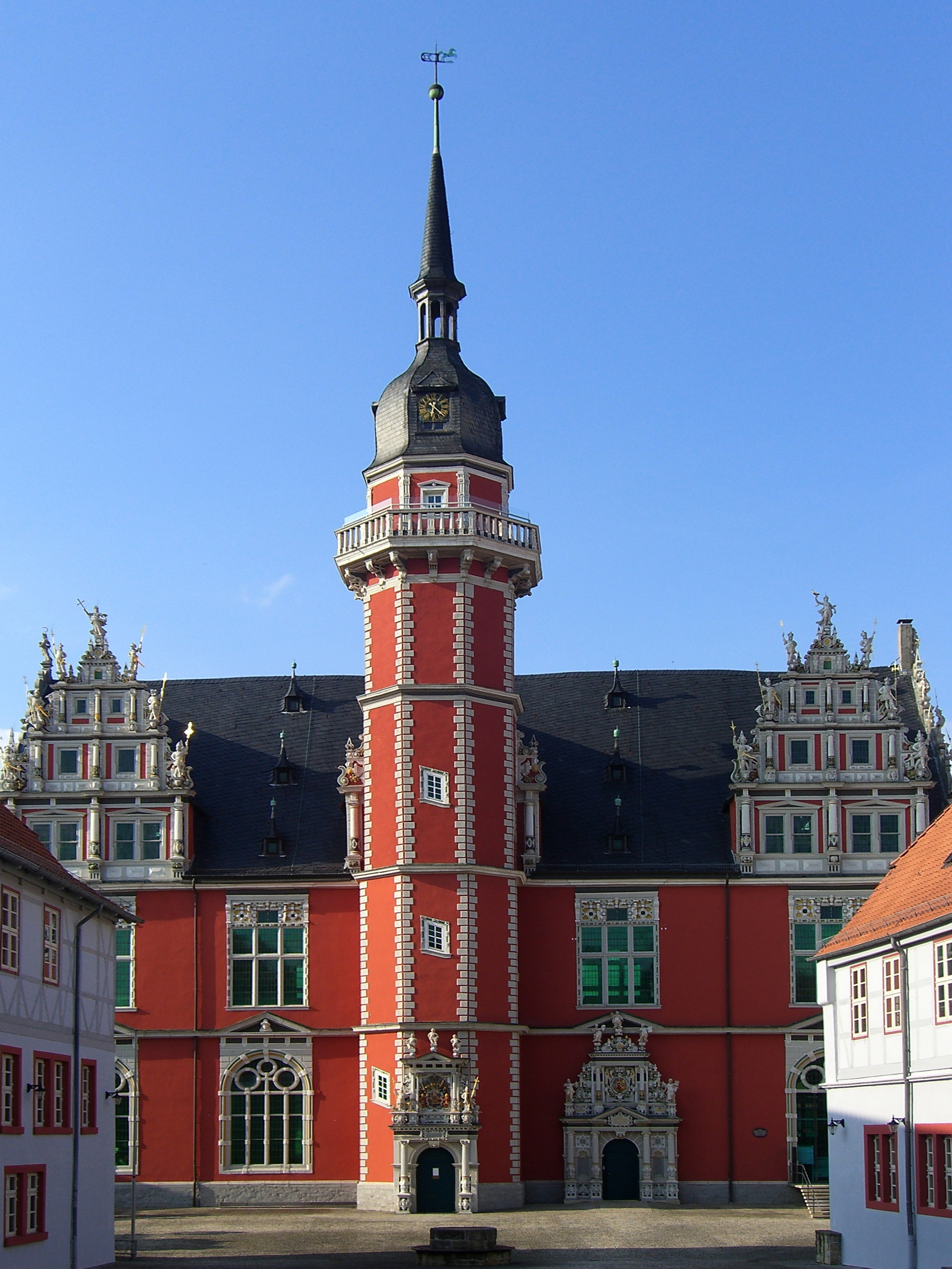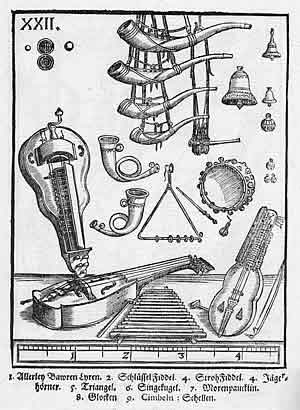|
Schloss Wolfenbüttel
Schloss Wolfenbüttel is a castle in Wolfenbüttel, Lower Saxony, Germany. An extensive four-wing complex, it originated as a moated castle (''Wasserburg''). It is the second-largest surviving ''schloss'' in Lower Saxony and served as the main residence of the rulers of the Principality of Brunswick-Wolfenbüttel from 1432 to 1753. It now houses a Gymnasium_(Germany), ''gymnasium'' secondary school, the Federal Academy of Arts Education, and a museum with its historic rooms on display. Its immediate vicinity is home to several historically significant buildings including the Herzog August Bibliothek, the Lessinghaus (Wolfenbüttel), Lessinghaus, the Zeughaus (Wolfenbüttel), Zeughaus, and the Kleines Schloss (Wolfenbüttel), Kleines Schloss. History Middle Ages It was first recorded in 1074 and was built as a fort on the river Oker by Widekind of Wolfenbüttel, recorded between 1089 and 1118. In the Oker marshes there was already a small settlement known as ''Wulferisbuttle'', ... [...More Info...] [...Related Items...] OR: [Wikipedia] [Google] [Baidu] |
Henry The Lion
Henry the Lion (; 1129/1131 – 6 August 1195), also known as Henry III, Duke of Saxony (ruled 1142-1180) and Henry XII, Duke of Bavaria (ruled 1156-1180), was a member of the Welf dynasty. Henry was one of the most powerful German princes of his time. As the Duke of Saxony, Henry had had a decisive part in 1152 in his cousin Frederick Barbarossa's campaign for the throne. Because of this, in the following years, he was intensely promoted by Barbarossa. So, in 1156, he received the Dukedom of Bavaria. In North Germany, Henry could now build a kingly presence. He achieved this in Brunswick by building a new collegiate church, St Blaise, and, in the neighbouring Dankwarderode Castle, he placed a statue of a lion, as a symbol of its place as the capital of his duchies. The aggressive building strategy of the Duke in Saxony and north of the Elbe supplanted the influence of the previous greats of Saxony. Next, Henry repaid Barbarossa’s sponsorship by putting great effort into ... [...More Info...] [...Related Items...] OR: [Wikipedia] [Google] [Baidu] |
Conrad Buno
Conrad Buno (–1671), was a German copperplate engraver, cartographer and publisher at the court of Wolfenbüttel (Guelpherbytum) and brother of Johann Buno (1617–1697), the theologian and pedagogue from Lüneburg Lüneburg, officially the Hanseatic City of Lüneburg and also known in English as Lunenburg, is a town in the German Bundesland (Germany), state of Lower Saxony. It is located about southeast of another Hanseatic League, Hanseatic city, Hambur .... Conrad Buno prepared a set of maps for the 1641 Brunswick-Lüneburg edition of Philipp Cluver's famous ''Introductio in Universam Geographicam'', an atlas with maps of Africa, America, Asia and the World, and text written by Johann Buno. References External links * 1610s births 1671 deaths German cartographers 17th-century German engravers {{Germany-artist-stub ... [...More Info...] [...Related Items...] OR: [Wikipedia] [Google] [Baidu] |
Paul Francke (architect)
Paul Francke (c. 1537, Weimar - 10 November 1615, Wolfenbüttel) was a German Renaissance architect, most notable as director of works for the Duchy of Brunswick-Lüneburg from 1564 until his death in 1615. His works include the Juleum Novum in Helmstedt, the Marienkirche in Wolfenbüttel (where he is also buried) and the Burganlage in Erichsburg. Life Since he was born in Weimar, he was influenced by 16th century castles and town halls in Thuringia and Saxony. He is first recorded as director of works in 1564, swearing an oath to Julius, Duke of Brunswick-Lüneburg the following year after working for him on Hesse Castle. Elmar Arnhold: Francke, Paul. In: Horst-Rüdiger Jarck, Dieter Lent u. a. (ed.): ''Braunschweigisches Biographisches Lexikon – 8. bis 18. Jahrhundert. Appelhans Verlag'', Braunschweig 2006, , pages 227–228. He is also recorded in 1573 as a 'Bauverwalter' or 'construction manager'. In 1575 he was put in charge of all the duke's building projects, includin ... [...More Info...] [...Related Items...] OR: [Wikipedia] [Google] [Baidu] |
Henry Julius, Duke Of Brunswick-Lüneburg
Henry Julius (; 15 October 1564 – 30 July 1613), a member of the House of Welf, was Duke of Brunswick-Lüneburg and ruling Prince of Brunswick-Wolfenbüttel from 1589 until his death. He also served as administrator of the Prince-Bishopric of Halberstadt from 1566 and of the Prince-Bishopric of Minden between 1582 and 1585. Biography Early life Henry Julius was born in Hessen am Fallstein as the eldest son of Duke Julius of Brunswick-Lüneburg (1528–1589) and his wife Hedwig of Brandenburg (1540–1602), at the time when the Principality of Brunswick-Wolfenbüttel was still under the rule of his grandfather Duke Henry V. Already in 1566, at the age of two, he was elected Lutheran administrator of the Halberstadt bishopric by the cathedral chapter; however, a condition of his election was an agreement that the cathedral chapter would lead the prince-bishopric under its own authority until Henry Julius reached the age of 14. His father implemented the Protestant Reformat ... [...More Info...] [...Related Items...] OR: [Wikipedia] [Google] [Baidu] |
Michael Praetorius
Michael Praetorius (probably 28 September 1571 – 15 February 1621) was a German composer, organist, and Music theory, music theorist. He was one of the most versatile composers of his age, being particularly significant in the development of musical forms based on Protestant Reformation, Protestant hymns. Life Praetorius was born Michael Schultze, the youngest son of a Lutheran pastor, in Creuzburg, in present-day Thuringia. After attending school in Torgau and Zerbst, he studied divinity and philosophy at the University of Frankfurt (Oder). He was fluent in a number of languages. After receiving his musical education, from 1587 he served as organist at the Marienkirche in Frankfurt. From 1592/3 he served at the court in Wolfenbüttel, under the employ of Henry Julius, Duke of Brunswick-Lüneburg. He served in the duke's Staatsorchester Braunschweig, State Orchestra, first as organist and later (from 1604) as ''Kapellmeister'' (court music director). [...More Info...] [...Related Items...] OR: [Wikipedia] [Google] [Baidu] |
Schmalkaldic League
The Schmalkaldic League (; ; or ) was a military alliance of Lutheranism, Lutheran Prince of the Holy Roman Empire, principalities and cities within the Holy Roman Empire during the mid-16th century. It received its name from the town of Schmalkalden, where the group was founded in 1531. Although created for religious motives soon after the start of the Reformation, its members later came to have the intention that the League would replace the Holy Roman Empire as their focus of political allegiance. While it was not the first alliance of its kind, unlike previous formations, such as the League of Torgau, the Schmalkaldic League had a substantial military to defend its political and religious interests. Origins The League was officially established on 27 February 1531 by Philip I, Landgrave of Hesse, and John Frederick I, Elector of Saxony, the two most powerful Protestant rulers in the Holy Roman Empire at the time. It originated as a defensive religious alliance, with the ... [...More Info...] [...Related Items...] OR: [Wikipedia] [Google] [Baidu] |
Henry I Of Brunswick-Grubenhagen
Henry I (August 1267 – 7 September 1322), Duke of Brunswick-Lüneburg, called the Admirable (, ), a member of the House of Welf, was the first ruler of the Principality of Grubenhagen from 1291 until his death. Life He was the eldest son of the Brunswick duke Albert the Tall and his second wife Adelaide, daughter of Margrave Boniface II of Montferrat. His father had ruled the Duchy of Brunswick-Lüneburg jointly with his brother John, until both divided their territory in 1269. Albert went on to rule the Principality of Wolfenbüttel until his death in 1279. Henry first ruled the Brunswick principality of Wolfenbüttel jointly with his younger brothers Albert II the Fat and William. In 1291 they again divided the territory; Henry received the part that came to be known as Principality of Grubenhagen. It included the cities of Einbeck, half of Hamelin, Clausthal, Amelungsborn, Duderstadt, Herzberg, and Osterode. Henry quarreled with his brother Albert, who had received th ... [...More Info...] [...Related Items...] OR: [Wikipedia] [Google] [Baidu] |
Asseburg (castle)
The Asseburg is a ruined hill castle on the narrow, southern crest of the Asse ridge in the Harz Mountains of Germany, not far from Wolfenbüttel. The castle was built around 1218 by Gunzelin of Wolfenbüttel and his descendants of the House of Asseburg, as a so-called '' Ganerbenburg'', or castle managed and occupied by more than one family or branch. Based on its dimensions, this elongated fortification was the largest hill castle in North Germany and was considered impregnable. Its purpose was to secure the lands around Wolfenbüttel. When Gunzelin refused to swear allegiance to Duke Albert I of Brunswick-Lüneburg, of the House of Welf, in 1255, the latter destroyed Gunzelin's Wolfenbüttel Castle and sieged Gunzelin's son ''Burchardus de Asseburc'' (''Burchard'' or ''Busso'' of Asseburg) at Asseburg Castle. Burchard was able to withstand during three years, however in 1258 had to relinquish the castle to Duke Albert I. Burchard was then allowed to retreat to Westphalia wi ... [...More Info...] [...Related Items...] OR: [Wikipedia] [Google] [Baidu] |
House Of Asseburg
The House of Asseburg, original German name ''von der Asseburg'', is an old Lower Saxony, Lower Saxon aristocratic family which had its origin in Wolfenbüttel and Asseburg (castle), Asseburg. During the 12th and 13th centuries the lords of Wolfenbüttel were able to establish their own small county, but were soon forced to give way to the Brunswick dukes of the House of Welf. Later their title was taken over by other families in the female line, and the counts of Asseburg continue to be landowners to this day. History Origins at Wolfenbüttel, Peine and Asseburg The family was originally named ''von Wolfenbüttel'', and its first member, Widekind of Wolfenbüttel, is recorded between 1089 and 1118. As ministerialis to Egbert II, Margrave of Meissen, count of Brunswick, he held an influential position and was able to support the margrave in the Duchy of Saxony, Saxon rebellion against Emperor Henry IV (HRR), Henry IV. Widekind had a water castle erected, Schloss Wolfenbüttel, ... [...More Info...] [...Related Items...] OR: [Wikipedia] [Google] [Baidu] |
Albert I Of Brunswick
Albert may refer to: Companies * Albert Computers, Inc., a computer manufacturer in the 1980s * Albert Czech Republic, a supermarket chain in the Czech Republic * Albert Heijn, a supermarket chain in the Netherlands * Albert Market, a street market in The Gambia * Albert Music, an Australian music company now known as Alberts ** Albert Productions, a record label * Albert (organisation), an environmental organisation concerning film and television productions Entertainment * ''Albert'' (1985 film), a Czechoslovak film directed by František Vláčil * ''Albert'' (2015 film), a film by Karsten Kiilerich * ''Albert'' (2016 film), an American TV movie * ''Albert'' (album), by Ed Hall, 1988 * "Albert" (short story), by Leo Tolstoy * Albert (comics), a character in Marvel Comics * Albert (''Discworld''), a character in Terry Pratchett's ''Discworld'' series * Albert, a character in Dario Argento's 1977 film '' Suspiria'' People * Albert (given name) * Albert (surname) * ... [...More Info...] [...Related Items...] OR: [Wikipedia] [Google] [Baidu] |






